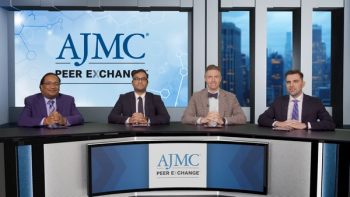
Economic Burden of Atopic Dermatitis Treatment
Elaine Siegfried, MD: The Institute for Clinical and Economic Review, when we finally got a new but very expensive target of biologic treatment did a huge analysis of the economic burden of this disease. And they calculated then, in terms of quality adjusted life years, that spending $30,000 or more on a drug for this disease is well worth it. So what are the costs besides just the personal cost to people? And again, atopic dermatitis doesn’t kill you, it just ruins your life. So with these kind of diseases that have an impact on the quality of people’s lives, what is that made up of? Missed work days, missed school days, missed educational opportunities, impaired sleep. And then more than that, the economic impact on the country is about emergency department visits, and urgent care visits, and doctor visits, and use of multiple different kinds of medications—some of which are effective and some of which aren’t effective. But all those things really add up.
I think for this disease, and really for all diseases, as we have medication innovations, first of all, it costs an average of a billion and a half dollars to bring a drug to market. And so that’s a big investment that companies are making in new drugs. And then new drugs are expensive and there’s a whole host of reasons why drugs are expensive, and it’s beyond our ability to discuss that right now.
But with new medications one of the biggest problems that we have is having people get access to them. And step edits and payer requirements really interfere with getting the best medications for people. The impact of that is, because if you give the cheap drugs to people that don’t work as well, or especially, because the less expensive ones are medications that aren’t intended to use—and that’s topical corticosteroids that have been around for a long time—there’s cheap ones, but they’re not intended for long-term daily use. So we want drugs that are going to maybe modify the disease course or at least put it into remission and keep it under control. And initial treatments to do that require the use of steroid-sparing medications, which are a little bit more expensive in the topical realm.
And then for people who have more severe disease that brings them into the emergency department in the hospital, that takes systemic medications. And the older systemic medications are systemic immunosuppressant nonspecific that require blood tests and at-risk systemic immunosuppression, those aren’t the best drugs for long-term use either. So payers have a big impact on access to medication, and it is a huge struggle. It’s the number one dissatisfier among healthcare providers about trying to get access to medication for people, and it takes up a lot of our time and distracts us from taking care of patients.
Julie Block: The awareness about eczema or atopic dermatitis among many medical specialties, among pediatricians and others who are part stakeholders in the healthcare system is very low. And that is part of our mission at the National Eczema Association, to “unhide” eczema. It has long been an underserved and underappreciated disease. The impact of the disease has been underappreciated, and we have a lot of educating to do. Many people, I’m sure, including many audience members who may be watching this, may experience the disease. Thirty-one million Americans have eczema. And if it’s just a little disease that they get and a little rash they get in the winter and they put some cream on and off it goes, they think it’s just a rash. And luckily, for mild disease, it is very controllable. But for moderate to severe disease, it is not, it’s a whole new ballgame. And the level of education and awareness about what it takes to treat and manage the disease and what that impact is on the patient, and on the family, and on society, is our work ahead of us.
Elaine Siegfried, MD: The economic burden of atopic dermatitis is now being studied. And of course, again, the reason people study that is because when you have new expensive treatments somebody’s got to pay for it, so you have to know whether it’s worth it. But first of all, atopic dermatitis is 10 times more common than psoriasis is, and the incidence of moderate to severe atopic dermatitis is about equal to the incidence of all of psoriasis. It’s ironic because psoriasis was focused and studied earlier than atopic dermatitis, and now we have many different biologic and targeted treatments that are available, for psoriasis. And we only have 1 new treatment like that, a systemic treatment for atopic dermatitis, although a robust pipeline. But the economic burden of atopic dermatitis is much higher than it is for psoriasis.
Newsletter
Stay ahead of policy, cost, and value—subscribe to AJMC for expert insights at the intersection of clinical care and health economics.






